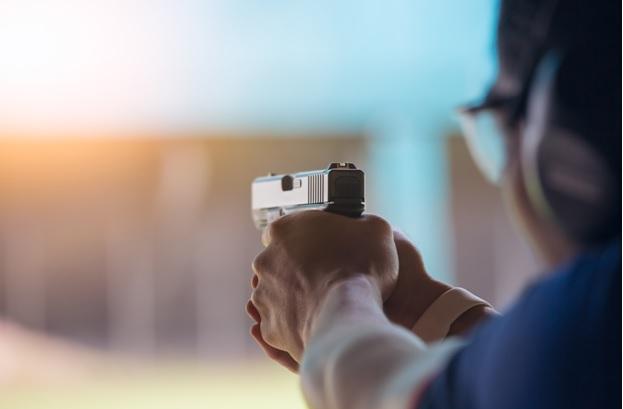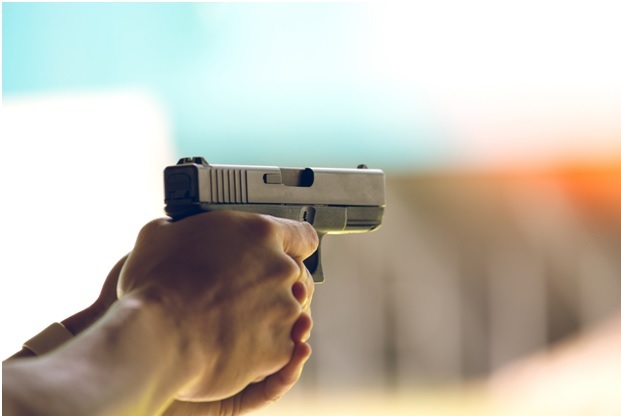Millions of Americans carry a firearm for self-defense. A recent study found that defensive firearm use occurs almost 1.7 million times annually.
Needless to say, many Americans carry and never have had to draw their weapons. Innumerable private homes and businesses around the country are defended by firearms as well.
Most, if not all of those that carry, shoot defensive rounds. That is hollow point ammunition or other rounds that are designed with optimal penetration and disruption (expansion) in mind.
Ammo designed for defensive applications, like Federal HST or Hydra-Shok hollow point ammo, is substantially different from full-metal jacket ammo.
Full metal jacket ammo, also known as FMJ ammo, is designed to be stable in flight, accurate, to feed reliably, and to penetrate a target as effectively as possible.
This is fundamentally (and extremely) different from ammo that is designed to enter a hostile target, dump its energy efficiently, and neutralize the threat.
But no two rounds will behave exactly in the same manner, even when fired from the same gun. The last thing you want in a life or death situation is an element of unpredictability.
All of this is to say that, if you carry a firearm for self defense, it does you little good to practice with FMJ rounds when what you’re actually carrying on your hip is a mag full of hollow-points.
Here’s why, if you carry Federal HST, or some other defensive round, you should train with that instead of FMJ handgun ammo.

Accuracy and Understanding Ammo Performance
One of the most straightforward reasons to train with the defensive rounds you actually carry is simply to make sure you can hit what you’re shooting at, which is critical in defensive situations.
Granted, there probably won’t be any serious aberrations in accuracy between any given hollow point or jacketed round, but there could be some.
At close ranges, you probably will never notice. However, you might notice that when shooting one round over the other, your groups shift somewhere away from your point of aim.
That means you need to adjust your sights. If you’re faced with a threat, your ability to stop it will be predicated primarily on whether you hit it or not.
So, take a few boxes of your defensive loads to the range, shoot through them, and adjust your sights accordingly.
It's great if your handgun is a tack driver with FMJ rounds, until you shoot hollow points and the bullets just aren’t landing where your sights are pointing.
That’s a problem. The solution is to train with the defensive rounds you actually carry, day to day.
Potential Feeding Issues
Something you probably know about FMJ bullets is that they have a round, solid nose and a full jacket.
One of the beneficial attributes of this bullet configuration is that, by and large, fully jacketed bullets are engineered to feed smoothly.
They feed smoothly not only in most repeaters, like bolt-action and pump-action rifles, but also in semi-automatic actions. Both recoil and gas-operated actions tend to feed jacketed bullets smoothly, overall.
Jacketed bullets also tend to feed nicely, even into chambers that don’t have good-quality feed ramps.
Hollow points are second to most FMJ bullets in this regard. The hollow in the nose is the culprit.
It can raise issues before the bullet even gets near the chamber. In some magazines, hollow points and their skived jackets can catch on mag feed lips, or on the edges of magazines. If that happens, you’re dead in the water.
Hollow points, especially those with sharp edges around the bullet’s nose, can also hang up on the edges of chambers, or get jammed on steep feed ramps.
This can be problematic too, and it’s only something you’ll know about if you actually shoot through a box of your defensive ammo at the range so you can know, beforehand, how your gun will respond to any given load.
Drawing your handgun on a live threat is not the time to discover that your hollow point ammo routinely hangs up on the edge of the chamber.

Potential Cycling Issues
There’s another potential issue you could face with hollow points if you don’t train with them: cycling issues.
This is not an issue you’ll ever come up against if you shoot a revolver, but if you shoot a semi-auto, take notes.
Every single ammo will perform differently in each gun. What cycles smoothly in one handgun may jam in another.
This is because every round has its own load data with respect to chamber pressure, muzzle velocity, and bullet weight.
Light rounds with smaller propellant charges might fail to cycle some actions, causing stovepipe jams.
Regardless, it’s not good news if you’re not prepared for it.
There is only one way to know which factory rounds will cycle nicely through your handgun, and which ones won’t. You have to train with them.
An Unpredictable Factor at a Moment of Life or Death Can Be Deadly
The whole purpose of this article is to illustrate some of the things that can go wrong if you are unprepared or train with the wrong ammo at the range.
The point of carrying a handgun is so you can be better prepared to face unexpected dangers. Carrying a firearm for self-defense and not practicing with the loads you intend to shoot is counterproductive.
The last thing you need is to discover something unexpected at the moment when a real-life threat presents itself.
You can’t see all obstacles, but you prepare for the ones you can. Learn from those that came before you.
Train with your hollow points at the range, and save the FMJ ammo for plinking or target practice.
Get Your Federal HST and Other Defensive Rounds Here
After reading this, if you think you need a few more boxes of Federal HST for training, you’re probably right.
Check them out at the previous link and take a look through the rest of our collection. We carry a wide range of other defensive rounds, too.
Stock up here and start training with them.

